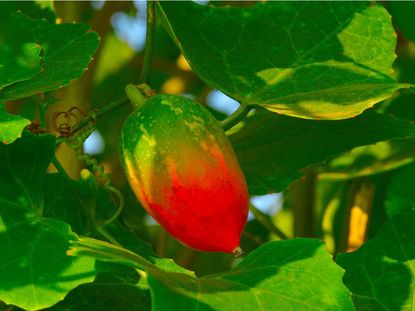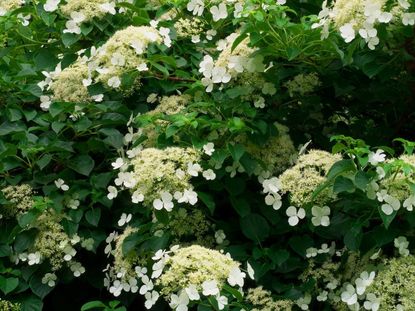Vines
If you want to learn more about vine planting and care but are not sure where to begin, look no further. Regardless of the types of vines you want to grow, info for vine plants is but a page or so away. Our vine care section includes tips for growing nearly any vine plant, from indoor vines to flowering vines in the home landscape. We’ll cover individual types of vines and their care as well as general information affecting both evergreen and flowering vine plants. Keep reading to find vine planting and care information for your particular needs.
Explore Vines
Vines
-
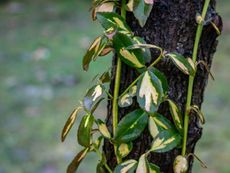
Wintercreeper Control – How To Get Rid Of Wintercreeper Plants
By Mary H. Dyer
-

Controlling Greenbrier: How To Get Rid Of Greenbrier Vine
Controlling greenbriar vine is a challenge. It looks benign but will take over your yard.
By Anne Baley
-

Virginia Creeper Control & How To Get Rid Of Virginia Creeper
Many gardeners become frustrated with Virginia creeper, as it chokes out everything in its path. However, this article provides tips for getting rid of Virginia creeper vines to alleviate those frustrations.
By Susan Patterson
-
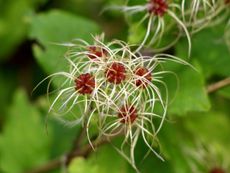
Traveler’s Joy Vine Removal - Tips For Controlling Traveler’s Joy Clematis
Controlling Traveler’s Joy may become necessary. This Clematis species is invasive in the U.S.
By Mary Ellen Ellis
-

7 Indoor Vine Plants That Are Stylish and So Easy To Grow
There’s nothing like indoor vine plants to change the vibe inside your home. Let them hang, trail along a surface, or even form a living indoor wall - a lovely way to bring the outdoors in.
By Amy Grant
-

Covering Brick Walls With Vines: What Type Of Vine For A Brick Wall
If you have a brick wall and are in search of a climbing vine to decorate and enhance your home, you not only need to decide the type of vine for a brick wall but consider the health of your house and what method the vine uses to climb. This article will help.
By Bonnie L. Grant
-

Winterizing Mandevillas: Tips For Overwintering A Mandevilla Vine
If you live in a more northern climate, planting mandevilla in a container is the best way to go. Click this article for tips on winterizing mandevillas.
By Mary H. Dyer
-
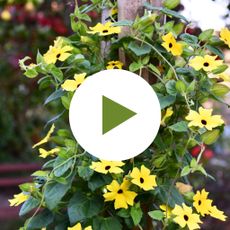
10 Flowering Vines With An Extended Bloom Season
Whether you’re short on space, need to add privacy or hide unsightly views, take advantage of your vertical space with flowering vines.
By Amy Draiss
-
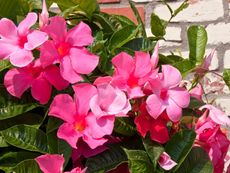
Mandevilla Vine: Tips For Proper Mandevilla Care
Mandevillas are tropical vines that add color to the patio or garden. Click here to learn all about mandevilla care.
By Heather Rhoades
-

Vine Plants As Shade Cover: Creating Shade With Vining Plants
Trees are not the only plants that can be used to shade hot, sunny areas. Vines can too. Learn about using vine plants as shade cover here.
By Darcy Larum
-

Growing A Dipladenia Plant - Learn The Difference Between Dipladenia And Mandevilla
Dipladenia is similar to mandevilla vine and works outside in warm zones, or indoors as an accent houseplant. We will discuss the difference between dipladenia and mandevilla in this article.
By Bonnie L. Grant
-
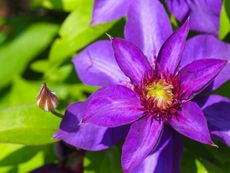
Growing Clematis - Tips For Care Of Clematis
Clematis plants are among the most popular and attractive flowering vines grown in the home landscape. Click to learn more.
By Nikki Tilley
-
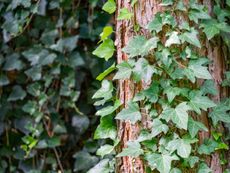
7 Invasive Vines To Avoid In Your Yard And Garden
What are some common invasive vines to avoid in your yard and garden spaces? Click here to find out.
By Susan Albert
-
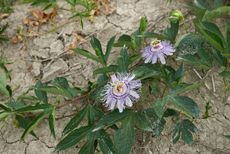
Maypop Vine Care – Learn How To Grow Maypops In The Garden
If you are thinking of growing maypop passion vines in your backyard, you’ll want a little more information about these plants. Click on the following article for tips on how to grow maypops and information on maypop vine care.
By Teo Spengler
-
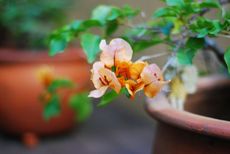
Potted Bougainvillea Plants: Tips For Growing Bougainvillea In Containers
Bougainvillea is a hardy tropical vine that grows in areas where winter temperatures remain warm. If you don't have growing space or live in a suitable climate, you can plant bougainvillea in a pot. This article will help.
By Mary H. Dyer
-
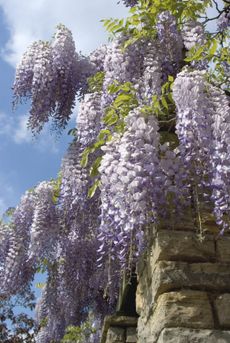
Growing Wisteria - Proper Wisteria Vine Care
While growing wisteria is easy, you should take caution with it, as it can quickly overtake everything without proper care. The following article provides tips for growing and caring for wisteria vines.
By Nikki Tilley
-
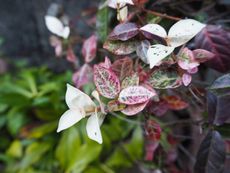
Asiatic Jasmine Care – Tips On Growing Asian Jasmine Vines
Asiatic jasmine is not a true jasmine, but it is a popular, fast spreading, hardy groundcover in USDA zones 7b through 10. Click this article to learn more about Asiatic jasmine care and how to grow Asiatic jasmine as a groundcover and a trailing vine.
By Liz Baessler
